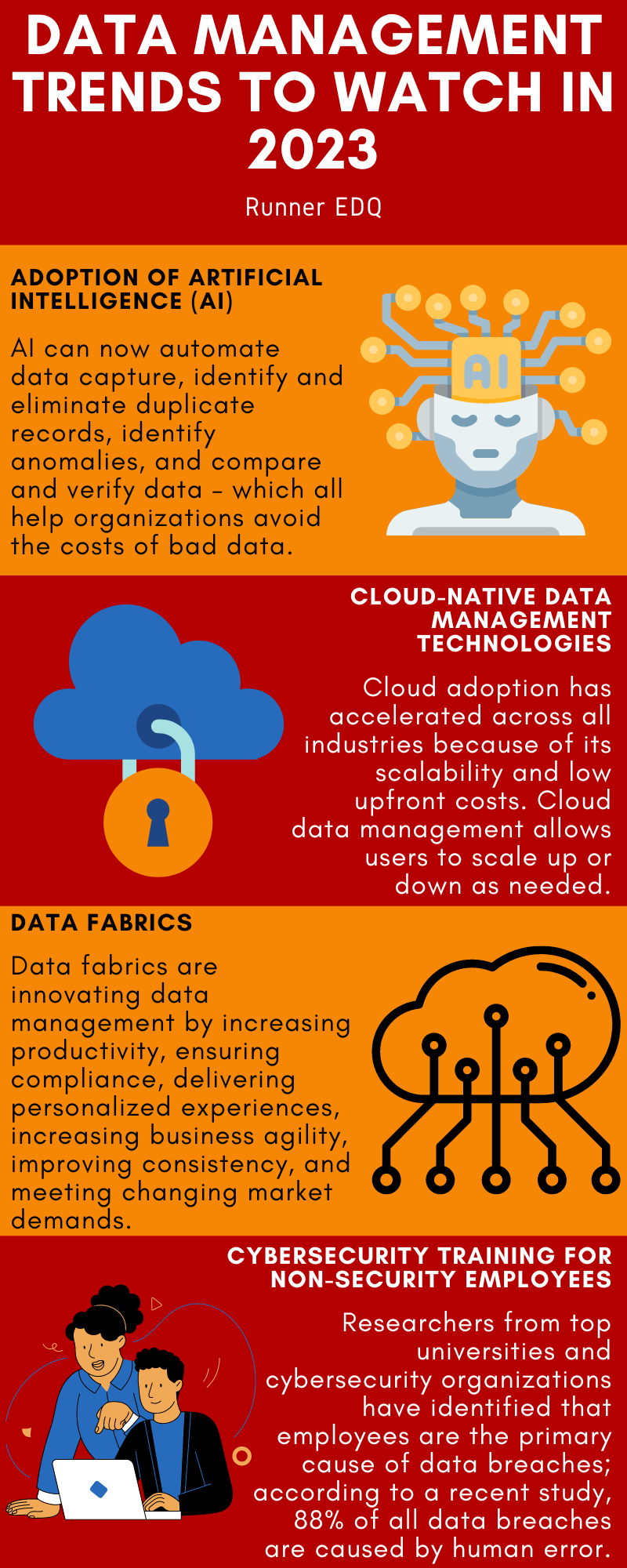We now live in a world driven by data, which helps organizations all over the world improve their decision-making and planning through actionable insights. Because of the value of data, data management processes and strategies continue to evolve. And if you want to maintain a competitive edge, it’s vital that you not only keep up with new technologies but also consider adopting the latest trends. Here are data management trends to watch in 2023:
Adoption of artificial intelligence (AI)
AI and machine learning are not only improving the quality of data management but increasing data accessibility and security. Without AI capabilities such as automation, data management can be an extremely labor-intensive activity, involving manually organizing, cataloging, labeling, and extracting data. AI is now being applied in data management to classify data, locate data, reduce errors, and integrate data. AI can automate data capture, identify and eliminate duplicate records, identify anomalies, and compare and verify data – which all help organizations avoid the costs of bad data.
Cloud-native data management technologies
Interconnectivity and mobility are some of the biggest benefits of cloud data management, allowing organizations to manage their security, governance, and compliance from anywhere. Cloud adoption has accelerated across all industries because of its scalability and low upfront costs. Cloud data management allows users to scale up or down as needed. And with consumption-based pricing, users only need to pay for what they use. The right service also features improved integration and ingestion, which leads to enhanced analytics and the ability to monitor and analyze data in real time.
Data fabrics
Not only are more organizations moving to the cloud, but many are adopting hybrid-cloud or multi-cloud environments. Data fabrics address these various data pipelines and cloud environments by providing the architecture to facilitate a data operational layer that brings all the data together.
With an integrated layer of connected data, users have centralized access to their enterprise data assets, such as consumer, marketing, and intelligence data. With a central data repository, organizations prevent data from becoming siloed between various platforms. Data fabrics are innovating data management by increasing productivity, ensuring compliance, delivering personalized experiences, increasing business agility, improving consistency, and meeting changing market demands.
Cybersecurity training for non-security employees
Researchers from top universities and cybersecurity organizations have identified that employees are the primary cause of data breaches; according to a recent study, 88% of all data breaches are caused by human error. Distracted employees are falling for phishing scams while others failed to confirm the legitimacy of an email.
Because data management involves accessing and protecting data, it also encompasses strategies to increase its security. Organizations are expected to invest more in data security training for non-security employees, helping workers across all levels and departments employ best practices that protect data from loss, theft, and modification.
To learn how we can help you and your business, complete the contact form.

